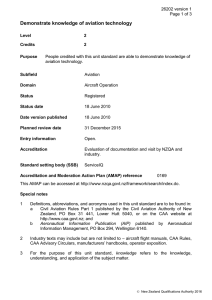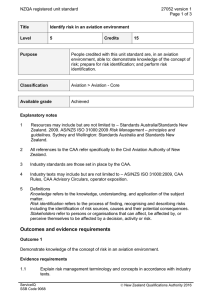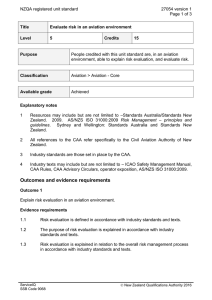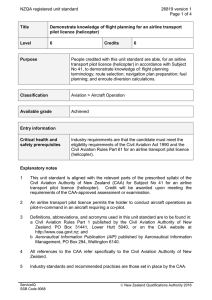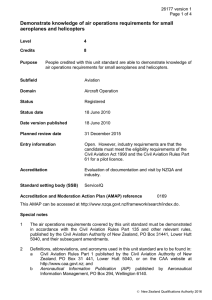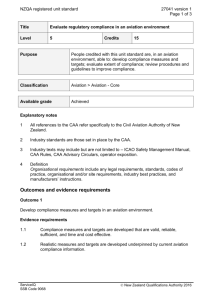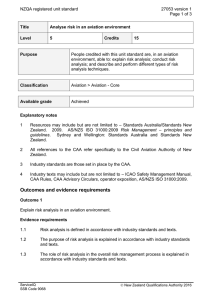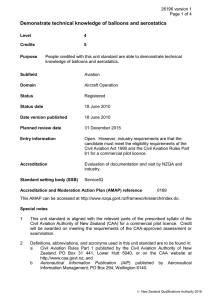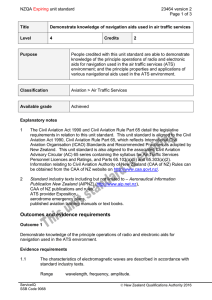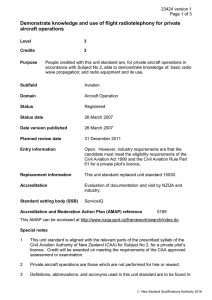Demonstrate knowledge of glider principles of flight and operation for
advertisement
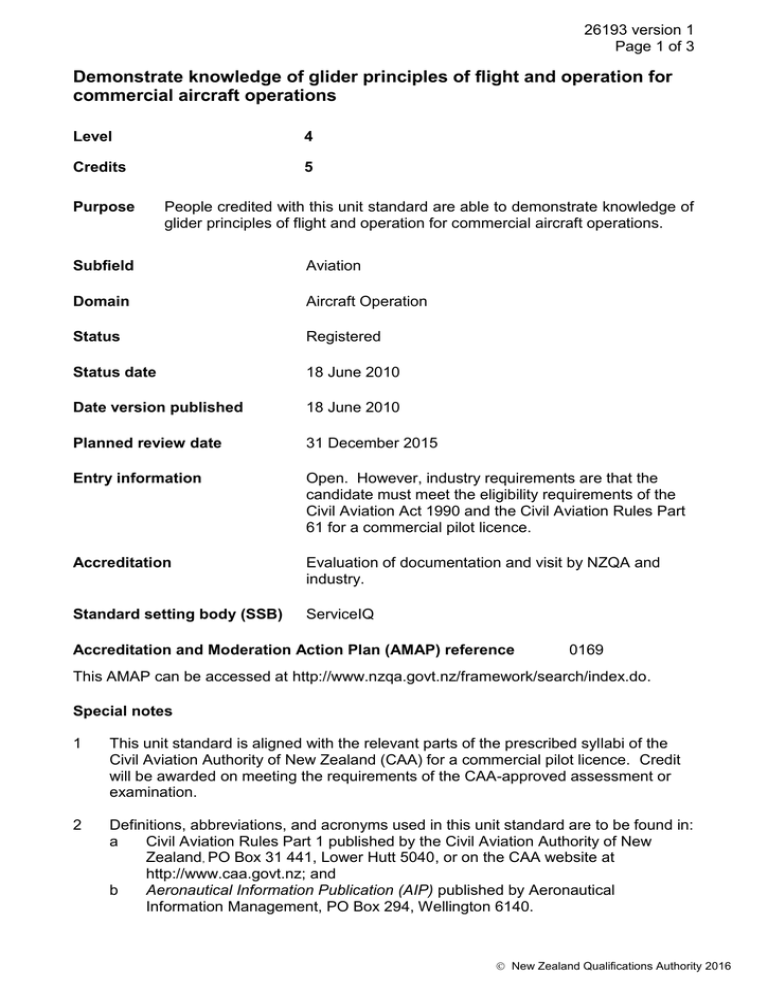
26193 version 1 Page 1 of 3 Demonstrate knowledge of glider principles of flight and operation for commercial aircraft operations Level 4 Credits 5 Purpose People credited with this unit standard are able to demonstrate knowledge of glider principles of flight and operation for commercial aircraft operations. Subfield Aviation Domain Aircraft Operation Status Registered Status date 18 June 2010 Date version published 18 June 2010 Planned review date 31 December 2015 Entry information Open. However, industry requirements are that the candidate must meet the eligibility requirements of the Civil Aviation Act 1990 and the Civil Aviation Rules Part 61 for a commercial pilot licence. Accreditation Evaluation of documentation and visit by NZQA and industry. Standard setting body (SSB) ServiceIQ Accreditation and Moderation Action Plan (AMAP) reference 0169 This AMAP can be accessed at http://www.nzqa.govt.nz/framework/search/index.do. Special notes 1 This unit standard is aligned with the relevant parts of the prescribed syllabi of the Civil Aviation Authority of New Zealand (CAA) for a commercial pilot licence. Credit will be awarded on meeting the requirements of the CAA-approved assessment or examination. 2 Definitions, abbreviations, and acronyms used in this unit standard are to be found in: a Civil Aviation Rules Part 1 published by the Civil Aviation Authority of New Zealand, PO Box 31 441, Lower Hutt 5040, or on the CAA website at http://www.caa.govt.nz; and b Aeronautical Information Publication (AIP) published by Aeronautical Information Management, PO Box 294, Wellington 6140. New Zealand Qualifications Authority 2016 26193 version 1 Page 2 of 3 3 All references to the CAA refer specifically to the Civil Aviation Authority of New Zealand. 4 Industry standards and recommended practices are those set in place by the CAA. 5 Industry texts may include but are not limited to – aircraft flight manuals, CAA Rules, CAA Advisory Circulars, CAA Flight Test Standards Guides, operator exposition. 6 For the purpose of this unit standard, knowledge refers to the knowledge, understanding, and application of the subject matter. Elements and performance criteria Element 1 Demonstrate knowledge of glider principles of flight and operation for commercial aircraft operations. Performance criteria 1.1 Mechanics of flight are defined and described in accordance with industry texts and standards. Range 1.2 The atmosphere is described in accordance with industry texts and standards. Range 1.3 includes but is not limited to – Bernoulli’s theorem, angle of attack, glide ratio, centre of gravity. Launching procedures are described in accordance with industry texts and standards. Range 1.5 includes but is not limited to – air density, air pressure, temperature, density altitude. Aerodynamic theory and its associated principles for aviation are described in accordance with industry texts and standards. Range 1.4 includes but is not limited to – mass, inertia, momentum, speed, velocity, acceleration, Newton’s laws of motion. includes but is not limited to – winch, auto, aero-towing. Soaring and its associated principles for aviation are described in accordance with industry texts and standards. Range includes but is not limited to – thermal soaring, ridge soaring, wave soaring. New Zealand Qualifications Authority 2016 26193 version 1 Page 3 of 3 1.6 Landings and factors influencing the decision to land are described in accordance with industry texts and standards. Range includes but is not limited to – location, size, surface, slope, wind direction. Please note Providers must be accredited by NZQA, or an inter-institutional body with delegated authority for quality assurance, before they can report credits from assessment against unit standards or deliver courses of study leading to that assessment. Industry Training Organisations must be accredited by NZQA before they can register credits from assessment against unit standards. Accredited providers and Industry Training Organisations assessing against unit standards must engage with the moderation system that applies to those standards. Accreditation requirements and an outline of the moderation system that applies to this standard are outlined in the Accreditation and Moderation Action Plan (AMAP). The AMAP also includes useful information about special requirements for organisations wishing to develop education and training programmes, such as minimum qualifications for tutors and assessors, and special resource requirements. Comments on this unit standard Please contact the ServiceIQ qualifications@serviceiq.org.nz if you wish to suggest changes to the content of this unit standard. New Zealand Qualifications Authority 2016
